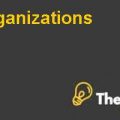
Company Overview
Olam International was a small cloth manufacturing facility in Nigeria in 1980s when the management of KewalramChenrai (KC) Group decided to vertically integrate into cotton production. They established a cotton plantation in Sub-Saharan Africa from where they began to produce and initially sold them in the domestic market.
In 1989, they began exporting cotton-related products to derive foreign exchange that would strengthen their manufacturing facility in Nigeria. As they achieved initial success from heir cotton operations, they began to diversify themselves into other agricultural products. They began selling cocoa, cotton, coffee, and cashews to domestic as well as international customers. Most of their customers for cashews were in India. Initially, cashews were bought through middle-men, however, afterwards cashews were purchased from producers to reduce costs eliminating the profit margin of middle-men.
The seasonal nature of cashews forced the company to enter into other products’ market. Therefore, they began exporting sheanuts, cocoa, rubber and robusta coffee. The company established its procurement bases in Benin, Ivory Coast, and Ghana assisting cashew-growers to increase their production potential and improve quality. Moreover, it also started to process these cashews by investing in blanching and shelling technologies.
Olam followed “farm gate to factory gate” model for cotton related products whereby it was used to buying products from places which are close to places where the product is sold.In 1994, they bought teak from Timber producers in Ghana and sold them to India. It also bought sugar from India and sold them to Ghana and Nigeria where the company distributed sugar to areas which were close to the areas where it was consumed.
Since it was a successful business, they applied the same sourcing model in Indonesia,Vietnam, Thailand,China, and Papua New Guinea that it applied in Africa. It also moved it’s headquarter to Singapore where the tax rate was 10% lower than other countries. Olam also added sesame from Africa, and coffee, cocoa and cotton from Asia and South America It also sourced sugar from Thailand, Brazil,and India.
In 2003, it began exporting milk powder to Algeria and developed back-office services such as shipping,insurance, and information technology and risk management to support its operations around the world.
Overall, it purchased agricultural commodities such as cashews, sesame, cocoa and coffee from 200,000 suppliers all over the world, process them and sold them to brands like Nestle, Kraft, Mars and Cadbury.
Problem Statement
The stock price of Olam International fell from $3.80 to $ 1.00 share from 2007 to 2008. The company, as increased in size and recognition, face many competitors such as Cargill and ADM. Moreover, they were selling products which were competing with each other. For instance, Olam considered manufacturing private –label customer brands which would compete with National brands that Olam supplied. It had also merged with other companies to strengthen itself.
However, the problem takes place whenever it gets difficult for employees of other companies to gel with the culture of Olam and they fear that the objective of Olam management was to Olamize them. Moreover, one of the grievances was that Olam always tried to operate on thin margins and reduced costs as opposed to investing in the research and development.
Olam traditionally acquired talent from countries such as India and Brazil who were ready to go to work in rural areas with harsh conditions. However, the position is changed and these talented individuals now want to live in India with their families as the opportunities in the countries have increased. On the other hand, the local talent does not possess skills required to
Agriculture is not seen as an attractive industry to pursue career in even through attractive salary packages have been offered. Overall, they will face talent shortages in the future to manage their dispersed business.
The economic downturn throughout the world has made customers price-sensitive reducing the profit margins. There is a need to reduce overheads and to invest in new attractive projects in Asia and Middle-East. The management of the company has increased pressure to combat reduction in shareholders’ wealth and maintaining the growth of 16 to 20% growth (top line) and 25% to 30% (bottom line) while earning a 10% equity spread.
Strengths
Olam has a diverse range of goods to sell all over the world. It has spread its risk by diversifying its products’ portfolio into cotton-related products, sugar, sesame, cashews, cocoa and others. Moreover, it enjoys great reputation among st its customers selling processed agricultural commodities to brands like Nestle, Kraft, Mars and Cad bury......................
This is just a sample partial work. Please place the order on the website to get your own originally done Case Solution














